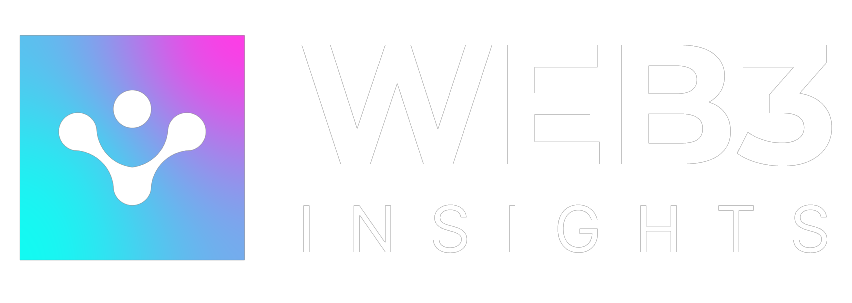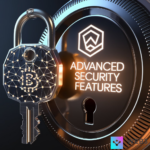
Unlike your physical wallet, a Web3 wallet is entirely digital. It doesn’t hold cash or credit cards but cryptocurrencies and other digital assets. More than just a storage tool, it’s your gateway to the decentralized web (Web3) where you can interact with decentralized applications (DApps), trade tokens, and explore the future of the internet.
When you think of a wallet, you probably picture the leather accessory that holds your cash and cards. It’s been our go-to tool for managing money for centuries. But as technology evolves, so do our wallets.
Let’s dive into what makes Web3 wallets essential in this exciting digital landscape.
What Are Web3 Wallets?

A Web3 wallet, sometimes called a decentralized or blockchain wallet, is a digital tool designed to securely store, manage, and interact with your cryptocurrencies, digital assets, and decentralized applications (DApps) on the blockchain.
Unlike traditional wallets, which banks or financial institutions control, Web3 wallets give you full ownership of your funds and data, aligning with the core principles of decentralization and user empowerment.
Web3 wallets act as your access point to the world of Web3. They enable you to explore decentralized finance (DeFi), collect non-fungible tokens (NFTs), participate in decentralized autonomous organizations (DAOs), and engage with various emerging blockchain applications. Essentially, these wallets are your bridge to the decentralized web, allowing you to securely conduct transactions, manage your assets, and interact with DApps without the need for intermediaries.
So, what exactly is a Web3 wallet? At its essence, it’s a software application that manages your private keys. These keys are crucial because they enable you to access blockchain networks and carry out transactions.
Key Features of Web3 Wallets

Web3 wallets offer a variety of features that make them essential tools for engaging with blockchain networks. Notable features include:
Interoperability

Interoperability is one of the standout features of Web3 wallets. It means your wallet can easily connect and work with a bunch of different Web3 apps. Whether you want to use decentralized exchanges, browse marketplaces, or interact with other blockchain-based platforms, your wallet has you covered.
Plus, Web3 wallets fit right into the bigger crypto world. They can link up with things like blockchain identity services, DAOs (that’s decentralized autonomous organizations), and DEXs (decentralized exchanges). This makes managing all your crypto activities super smooth.
And the best part? You can access your Web3 wallet from any device or platform, no matter where you are. So whether you’re on your phone, tablet, or computer, your wallet is always just a tap or click away. It’s all about making your crypto experience seamless and hassle-free.
Privacy & Security

Web3 wallets are all about giving you more control and security over your digital assets and personal data. Unlike traditional systems where you often have to share personal information with third-party providers, Web3 wallets let you manage your assets without giving away any sensitive details, keeping your privacy intact.
On the security side, these wallets come with some pretty advanced features. They use top-notch encryption to protect your private keys and other important information. Plus, many are starting to support biometric authentication like fingerprint and facial recognition, making it easier and more secure to access your wallet.
Additionally, You’re in charge. With Web3 wallets, the principle of self-custody means you have complete control over your digital assets and private keys. No one else can access or manage your holdings, just you.
Peer-Peer Transactions

Web3 wallets make it super easy to send money directly from your wallet to someone else’s, all through a blockchain network. The cool part is that you don’t need a bank or payment service to step in as the middleman.
It’s just you, the other person, and the blockchain taking care of the transaction. This peer-to-peer feature means faster, more direct transfers without the usual fees or delays you might get with traditional financial services.
Web3 Wallets (Custody Solutions)

Here are the major types of Web 3 wallets:
1. Non-Custodial Wallets(Self-Custody).
Non-custodial wallets are also called self-custody wallets. These wallets give users complete control over their digital assets. They use two types of keys: a public key and a private key. The public key is like your address for receiving cryptocurrency, while the private key is a secret code that lets you access and manage your assets. This means you own and manage everything yourself, but it also means you’re fully responsible for keeping your assets safe.
Ledger hardware wallets, such as the Ledger Nano S and Ledger Nano X, are non-custodial wallets ans are designed to provide maximum protection for your assets. With features like secure chip technology, offline storage, and compatibility with over 1,500 cryptocurrencies, Ledger ensures that your private keys are never exposed to potential threats. To get yours, click here
2. Custodial Wallets
Custodial wallets differ from non-custodial wallets in that a third party, like an exchange such as Coinbase, manages the private keys for the user. These wallets typically require KYC (know-your-customer) verification and offer recovery options similar to those used by email services. However, this setup means users must trust the third party to securely manage their assets. While custodial wallets can offer features like interacting with smart contracts, they do so with less user control.
3. Smart Contract Wallets
Smart contract wallets are controlled by code on a blockchain. On Solana, this code is called a program, but we’ll stick to the term smart contract here. These wallets work based on the rules set in the smart contract, which might include things like needing multiple signatures to approve a transaction. This adds an extra layer of security. Smart contract wallets also have the benefit of fund recovery using features like two-factor authentication. These wallets are great for individuals, businesses, or organizations that require approval from multiple people for transactions.
Conclusion
To wrap things up, Web3 wallets are truly transforming how we handle digital assets and interact with decentralized applications. By giving you full control over your private keys and assets through non-custodial solutions, these wallets significantly reduce the need to rely on third parties.
If you’re eager to dive deeper into the world of crypto and Web3, be sure to check out our blog where we cover everything from the basics to the latest trends and advanced topics.








